-
 Bitcoin
Bitcoin $114400
0.68% -
 Ethereum
Ethereum $3550
2.48% -
 XRP
XRP $3.001
4.99% -
 Tether USDt
Tether USDt $0.9999
0.01% -
 BNB
BNB $757.6
1.46% -
 Solana
Solana $162.9
1.07% -
 USDC
USDC $0.9998
0.00% -
 TRON
TRON $0.3294
0.91% -
 Dogecoin
Dogecoin $0.2015
2.46% -
 Cardano
Cardano $0.7379
2.01% -
 Stellar
Stellar $0.4141
8.83% -
 Hyperliquid
Hyperliquid $37.83
-1.91% -
 Sui
Sui $3.454
0.76% -
 Chainlink
Chainlink $16.62
3.53% -
 Bitcoin Cash
Bitcoin Cash $554.6
2.84% -
 Hedera
Hedera $0.2486
3.91% -
 Ethena USDe
Ethena USDe $1.001
0.00% -
 Avalanche
Avalanche $21.95
3.34% -
 Toncoin
Toncoin $3.563
-2.85% -
 Litecoin
Litecoin $112.7
2.65% -
 UNUS SED LEO
UNUS SED LEO $8.977
0.13% -
 Shiba Inu
Shiba Inu $0.00001232
1.85% -
 Uniswap
Uniswap $9.319
2.93% -
 Polkadot
Polkadot $3.632
1.38% -
 Monero
Monero $307.2
2.36% -
 Dai
Dai $0.9997
-0.03% -
 Bitget Token
Bitget Token $4.340
0.91% -
 Pepe
Pepe $0.00001048
1.07% -
 Cronos
Cronos $0.1348
3.26% -
 Aave
Aave $261.5
1.93%
How do NFT Technological Advancements promote innovation in NFTs?
NFT innovation is booming, fueled by improved scalability, interoperability, and enhanced functionality, including fractional NFTs and metaverse integration, all supported by decentralized storage solutions.
Mar 04, 2025 at 08:43 am
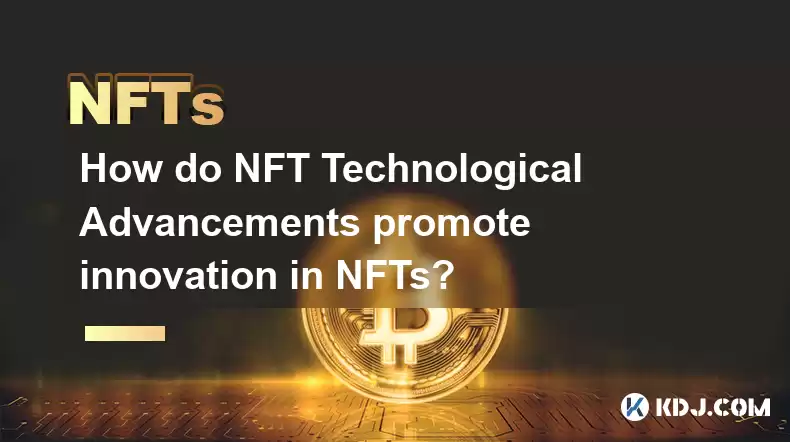
Key Points:
- Improved Scalability: Technological advancements are addressing NFT scalability issues, allowing for faster transactions and lower fees.
- Enhanced Interoperability: New protocols are enabling NFTs to function across different blockchains, expanding their utility and reach.
- Increased Functionality: Developments like fractional NFTs and NFT royalties improvements are adding new dimensions to NFT functionality.
- Metaverse Integration: NFTs are becoming increasingly integrated with the metaverse, creating new opportunities for digital ownership and interaction.
- Decentralized Storage Solutions: Advancements in decentralized storage aim to enhance security and accessibility of NFT assets.
How do NFT Technological Advancements promote innovation in NFTs?
The world of Non-Fungible Tokens (NFTs) is rapidly evolving, driven by continuous technological advancements. These innovations are not merely incremental improvements; they are fundamentally reshaping the NFT landscape, fostering creativity and unlocking new possibilities. One of the most significant areas of progress lies in tackling the limitations of existing blockchain technologies.
The scalability problem has been a major hurdle for NFTs. High transaction fees and slow processing times have hindered mass adoption. However, advancements like layer-2 scaling solutions and the development of new, more efficient blockchains are directly addressing this. These solutions promise faster and cheaper NFT transactions, making them accessible to a wider audience. This improved scalability directly fuels innovation by lowering the barrier to entry for creators and collectors.
Interoperability, the ability for NFTs to function seamlessly across different blockchains, is another key area of progress. Previously, NFTs were often siloed within their respective ecosystems. Now, emerging cross-chain protocols are breaking down these barriers, allowing NFTs to be used and traded across various platforms. This increased interoperability opens up entirely new avenues for innovation, enabling the creation of more complex and interconnected NFT experiences.
NFT functionality itself is undergoing a significant transformation. The concept of fractional NFTs, allowing ownership of a single NFT to be divided amongst multiple parties, is gaining traction. This opens up opportunities for greater liquidity and broader participation in the NFT market. Simultaneously, improvements in royalty mechanisms are empowering creators by providing them with more control over the secondary market sales of their work. These enhancements not only improve the financial aspects of NFT creation but also incentivize innovation and artistic expression.
The metaverse, a persistent, shared 3D virtual world, is becoming increasingly intertwined with NFTs. NFTs are proving to be vital in establishing digital ownership within these virtual environments. Users can use NFTs to represent their in-world assets, avatars, and virtual land. This integration is pushing the boundaries of digital ownership and interaction, driving innovation in areas like virtual fashion, gaming, and digital art experiences. The possibilities for creative expression within this burgeoning space are practically limitless.
Security and accessibility of NFT assets are paramount. Centralized storage solutions pose risks to the very essence of decentralization. Therefore, technological advancements in decentralized storage solutions are crucial. These solutions, often built upon IPFS (InterPlanetary File System) or similar technologies, aim to ensure that NFT data is securely stored and accessible, even if the original platform goes offline. This increased resilience fosters trust and encourages wider adoption, thereby fueling innovation.
The development of more user-friendly interfaces and tools is also a significant factor in promoting NFT innovation. The initial complexity of interacting with NFTs has been a barrier for many. However, the emergence of more intuitive platforms and tools is making NFT creation, trading, and management significantly easier. This simplification allows a broader range of individuals to participate, fostering creativity and driving innovation.
Frequently Asked Questions:
Q: What are layer-2 scaling solutions, and how do they improve NFT scalability?
A: Layer-2 scaling solutions are technologies built on top of existing blockchains (like Ethereum) to process transactions off-chain, reducing the load on the main chain. This leads to faster transaction times and lower fees, directly improving NFT scalability.
Q: How does improved interoperability benefit NFT creators and collectors?
A: Interoperability allows NFTs to move freely between different blockchains, expanding their utility and market reach. This benefits creators by widening their potential audience and collectors by giving them access to a broader range of NFTs.
Q: What are the potential risks associated with fractional NFTs?
A: While fractional NFTs offer increased liquidity, they also introduce complexities related to governance and the management of fractional ownership. Careful consideration of these aspects is crucial.
Q: How do decentralized storage solutions enhance the security of NFTs?
A: Decentralized storage removes the single point of failure associated with centralized servers. If one storage node fails, the data remains accessible via other nodes, increasing the resilience and security of NFT assets.
Q: What role does the metaverse play in the future of NFTs?
A: The metaverse is poised to become a major application space for NFTs, enabling the creation of virtual economies, digital assets, and immersive experiences built around unique digital ownership.
Q: What are some examples of user-friendly NFT platforms?
A: Numerous platforms are emerging that simplify NFT interactions, offering intuitive interfaces for both creators and collectors. Specific examples vary and are constantly evolving. Researching current market leaders is advisable.
Disclaimer:info@kdj.com
The information provided is not trading advice. kdj.com does not assume any responsibility for any investments made based on the information provided in this article. Cryptocurrencies are highly volatile and it is highly recommended that you invest with caution after thorough research!
If you believe that the content used on this website infringes your copyright, please contact us immediately (info@kdj.com) and we will delete it promptly.
- Cryptocurrency, Altcoins, and Profit Potential: Navigating the Wild West
- 2025-08-04 14:50:11
- Blue Gold & Crypto: Investing Disruption in Precious Metals
- 2025-08-04 14:30:11
- Japan, Metaplanet, and Bitcoin Acquisition: A New Era of Corporate Treasury?
- 2025-08-04 14:30:11
- Coinbase's Buy Rating & Bitcoin's Bold Future: A Canaccord Genuity Perspective
- 2025-08-04 14:50:11
- Coinbase's Buy Rating Maintained by Rosenblatt Securities: A Deep Dive
- 2025-08-04 14:55:11
- Cryptos, Strategic Choices, High Returns: Navigating the Meme Coin Mania
- 2025-08-04 14:55:11
Related knowledge
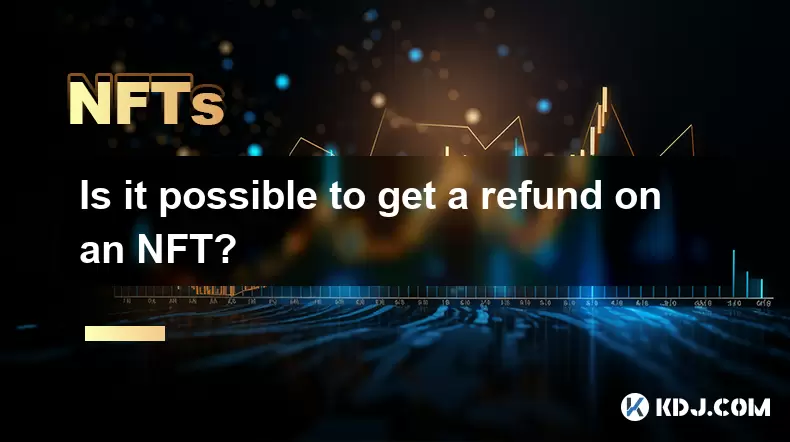
Is it possible to get a refund on an NFT?
Jul 21,2025 at 08:35pm
Understanding NFT Transactions and RefundsWhen you purchase an NFT (Non-Fungible Token), the transaction is typically recorded on a blockchain, making...
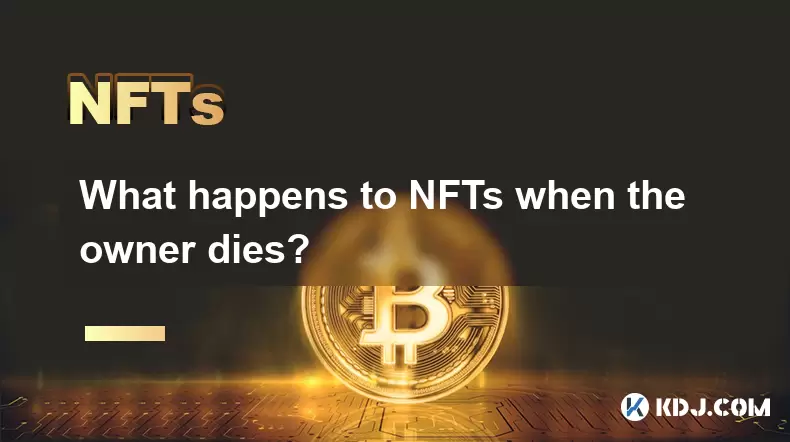
What happens to NFTs when the owner dies?
Jul 22,2025 at 02:43pm
Legal Ownership and Digital AssetsWhen an individual owns NFTs, the question of what happens to these assets upon their death is a pressing one. NFTs ...
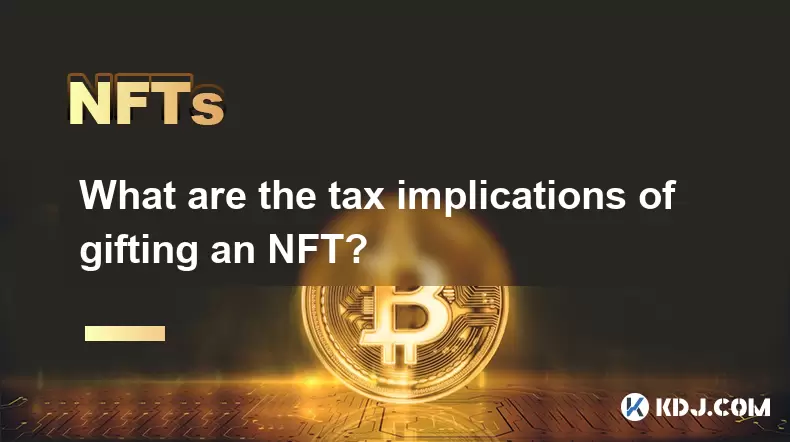
What are the tax implications of gifting an NFT?
Jul 19,2025 at 04:21am
Understanding the Basics of NFT GiftingGifting a Non-Fungible Token (NFT) involves transferring ownership from one individual to another without recei...
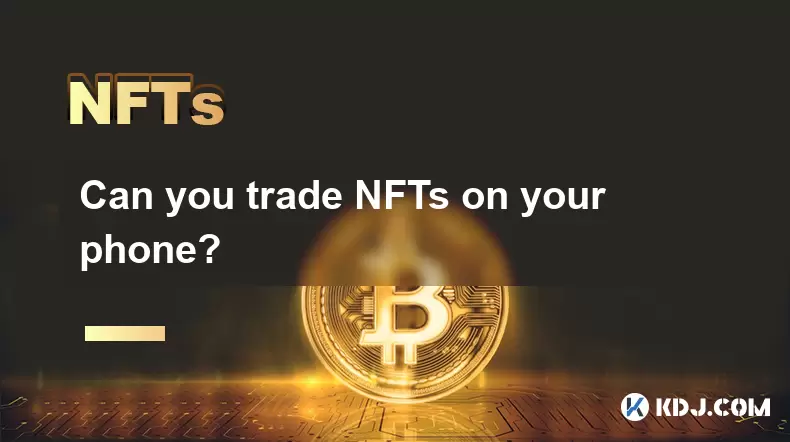
Can you trade NFTs on your phone?
Jul 18,2025 at 04:29am
Trading NFTs on Mobile DevicesYes, you can trade NFTs on your phone, and the process has become increasingly streamlined thanks to a variety of mobile...
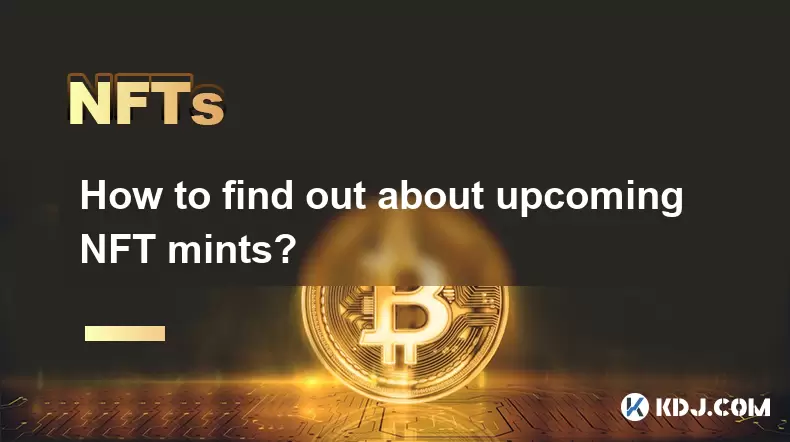
How to find out about upcoming NFT mints?
Jul 18,2025 at 11:50am
Exploring NFT Minting OpportunitiesUnderstanding the landscape of upcoming NFT mints is crucial for collectors, investors, and creators who wish to st...
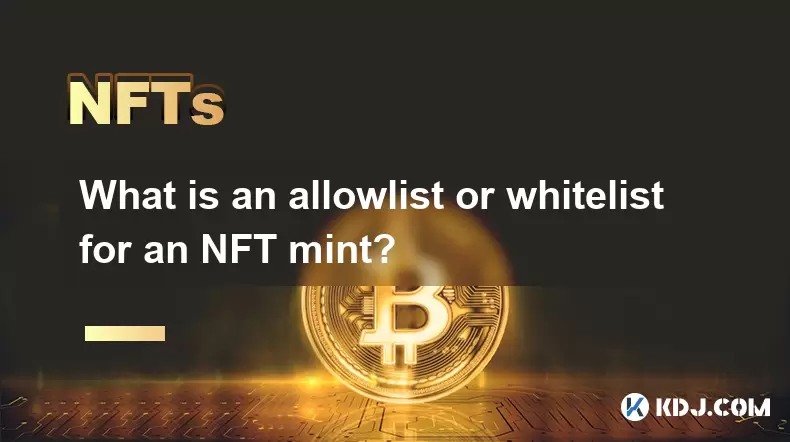
What is an allowlist or whitelist for an NFT mint?
Jul 20,2025 at 07:14pm
Understanding the Concept of an Allowlist for NFT MintingAn allowlist, also commonly referred to as a whitelist, is a mechanism used in the NFT mintin...

Is it possible to get a refund on an NFT?
Jul 21,2025 at 08:35pm
Understanding NFT Transactions and RefundsWhen you purchase an NFT (Non-Fungible Token), the transaction is typically recorded on a blockchain, making...

What happens to NFTs when the owner dies?
Jul 22,2025 at 02:43pm
Legal Ownership and Digital AssetsWhen an individual owns NFTs, the question of what happens to these assets upon their death is a pressing one. NFTs ...

What are the tax implications of gifting an NFT?
Jul 19,2025 at 04:21am
Understanding the Basics of NFT GiftingGifting a Non-Fungible Token (NFT) involves transferring ownership from one individual to another without recei...

Can you trade NFTs on your phone?
Jul 18,2025 at 04:29am
Trading NFTs on Mobile DevicesYes, you can trade NFTs on your phone, and the process has become increasingly streamlined thanks to a variety of mobile...

How to find out about upcoming NFT mints?
Jul 18,2025 at 11:50am
Exploring NFT Minting OpportunitiesUnderstanding the landscape of upcoming NFT mints is crucial for collectors, investors, and creators who wish to st...

What is an allowlist or whitelist for an NFT mint?
Jul 20,2025 at 07:14pm
Understanding the Concept of an Allowlist for NFT MintingAn allowlist, also commonly referred to as a whitelist, is a mechanism used in the NFT mintin...
See all articles

























































































